WE LOOK at some of Ireland’s award-winning, record-breaking and unique travel destinations
A is for the Antrim Coast Road
Now more properly known as the Causeway Coastal Road, the North of Ireland's A2 is reckoned today to be one of the most spectacular routes in the world. The road clings perilously to a rocky coastline snaking round Co. Antrim, and for the last few miles, Co. Derry. Villages, glens, beaches and towering cliffs - this route has them all, plus more views than you could shake a pair of binoculars at.
 Brú na Bóinne, one of the oldest stone constructions in Europe (Picture: Tourism Ireland)
Brú na Bóinne, one of the oldest stone constructions in Europe (Picture: Tourism Ireland)B is for Brú na Bóinne
Every winter solstice for the last 5,000 years a small drama has taken place in a stone chamber in Co. Meath. At sunrise on December 21 a shaft of light travels the length of an underground passage at Newgrange burial chamber, lighting it up for 20 minutes.
The ancient purpose of this light show can only be guessed at, but we reckon it has more to do with mystical goings-on than, say, local shop opening hours.
Further, the strange phenomenon is par for the course in one of the world’s most important prehistoric landscapes. Built in the Late Stone Age, this is one of the largest assemblages of megalithic art in Western Europe.
Brú na Bóinne is one of Ireland’s three UNESCO World Heritage Sites.
C is for Carrick-a-Rede Rope Bridge
For a diverting afternoon, cross the vertiginous Carrick-a-Rede Rope Bridge, which links Co. Antrim to tiny Carrick Island some 24 metres away. While the angry waters of the Atlantic below do their impersonation of a giant jacuzzi, you can take this scary trans-Atlantic journey.
D is for Donegal
In 2017, Donegal was named “the coolest place on the planet” by no less an authority than the National Geographic Traveller, who know a cool destination when they see one. Donegal’s attractions — Malin Head, the Slieve League Cliffs and Glenveagh National Park — are adjudged to be must-see attractions for anyone travelling Ireland.
E is for Enniskillen
Enniskillen is a town of views across the two Lough Ernes (Upper and Lower), ancient pubs, historic churches and fascinating museums. In terms of record breakers, it has Portora Royal School which boasts Nobel Prize winner, Samuel Beckett amongst its former pupils.
Other alumni include Oscar Wilde and Evelyne Miller Henry Francis Lyte who wrote Abide With Me. A wonderful symmetry accompanies the fact that the two people responsible for Waiting for Godot and Abide With Me should have gone to the same Fermanagh school.
Who know? A visit there could awaken the muse within you.
F is for Florence Court
Florence Court in Co. Fermanagh is the home of the Florence Court Yew, from which the strain known as the Irish yew — familiar throughout the world — was propagated. The original specimen, grown from a seedling circa 1750, can be found lurking unassumingly near the main house, an impressive Palladian Anglo-Irish pile.
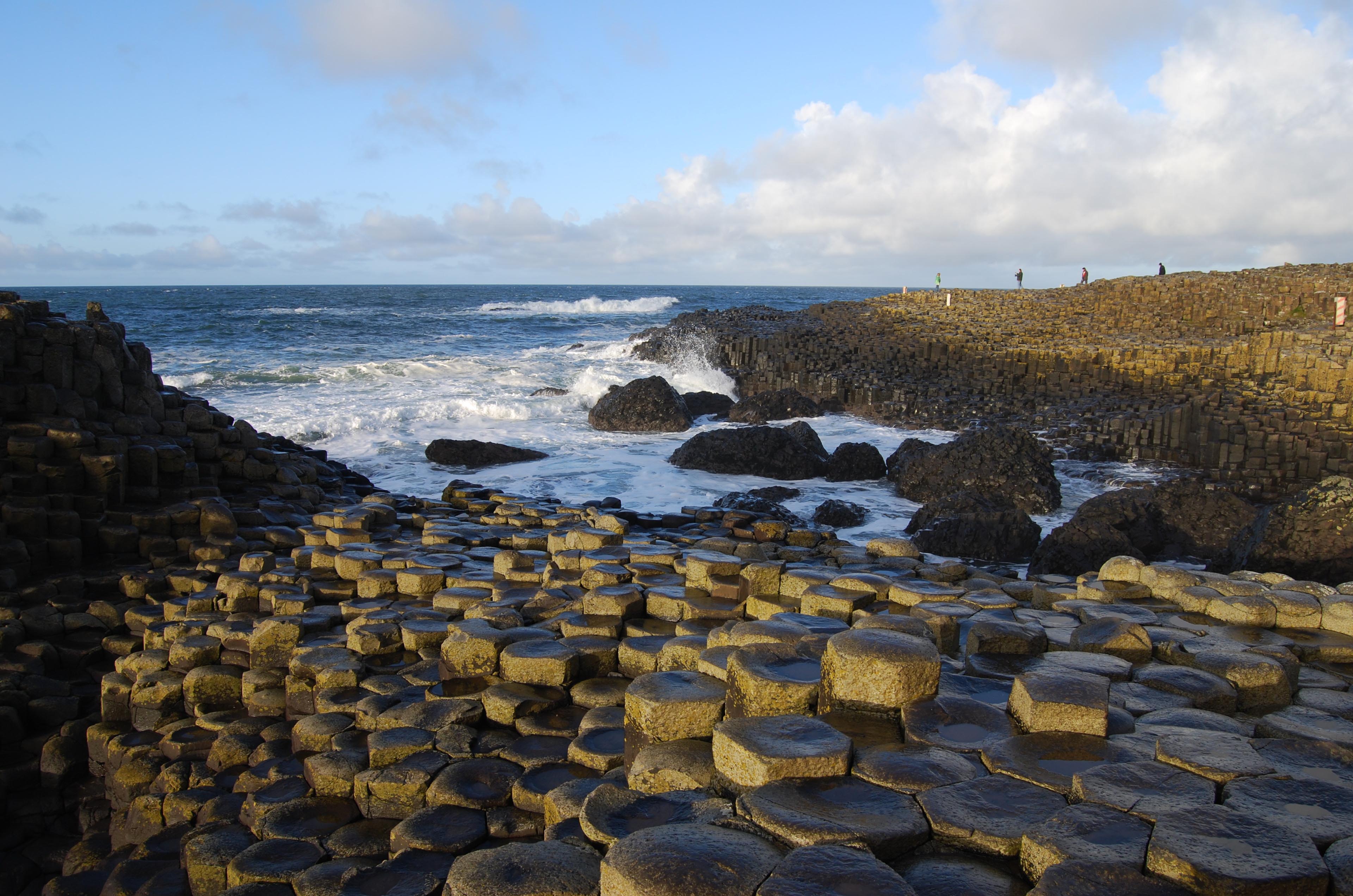 The Giant's Causeway in Co. Antrim (Picture: Tourism Ireland)
The Giant's Causeway in Co. Antrim (Picture: Tourism Ireland)G is for the Giant’s Causeway
The Giant's Causeway, for centuries a geological wonder known only to kelp gatherers and sheep herders, is one of the island of Ireland’s three UNESCO Heritage Sites. The astonishing complex of octagonal basalt columns packed together stretch round Antrim’s north coast.
Several theories exist to explain the phenomenon, including: it was the work of the giant Finn MacCool; it was God; it’s a geological phenomenon that involved molten lava erupting 60million years ago then cooling and shrinking.
H is for hotel
Harvey's Point Hotel, Lough Eske, Donegal has been named Ireland’s top hotel and one of Europe’s top 20 at the Trip Adviser Awards. The hotel lies smack bang on the Ulster Way with the Bluestack Mountains as a backdrop. First class accommodation, a truly warm welcome, and impressive restaurant — this is bleak chic at its most impressive.
The residents’ restaurant has a magnificent panoramic view across Lough Eske, home to the increasingly rare char, a tasty species of salmon. Even scarcer freshwater oysters, reputedly containing pearls lurk along the lough’s edges. However, it’s illegal to fish for them, so this doesn’t represent a viable way of bankrolling your holiday.
I is for islands
Ireland has plenty of islands - offshore gems (Tory, Valentia), isles complete with pagan statues (Boa in Lough Erne), islands that require a cable car journey (Dursey) to get there. But we might as well go as for the island that’s the farthest north, Rathlin, as its old Manor House inn has just been refurbished and re-opened at a cost of £1million. Just the place to sit and have a pint of Guinness as a stiff north-easterly blows across.
J is for Jerpoint Abbey
Jerpoint Abbey, Co. Kilkenny, is one of the finest Cistercian monastic ruins in Ireland. It was founded in the second half of the 12th century, near Thomastown - the only town in Ireland named after a Welshman, fact fans. In fact it was constructed in 1180, by Donogh O'Donoghoe Mac Gilla Patraic, who seems to have done a remarkable job as much of it remains intact.
 A much-admired thoroughfare, The Dark Hedges (Picture: Mal Rogers)
A much-admired thoroughfare, The Dark Hedges (Picture: Mal Rogers)K is for King’s Landing
King’s Landing is its Game of Thrones name, but locals in Co. Antrim have known this tree-arched road as The Dark Hedges since the beeches reached maturity some 200-300 years ago. In December 2016 the prestigious architectural US Digest magazine placed the Hedges at number seven in its top 10 most beautiful streets on the planet - ahead of the likes of the Champs-Elysees in Paris.
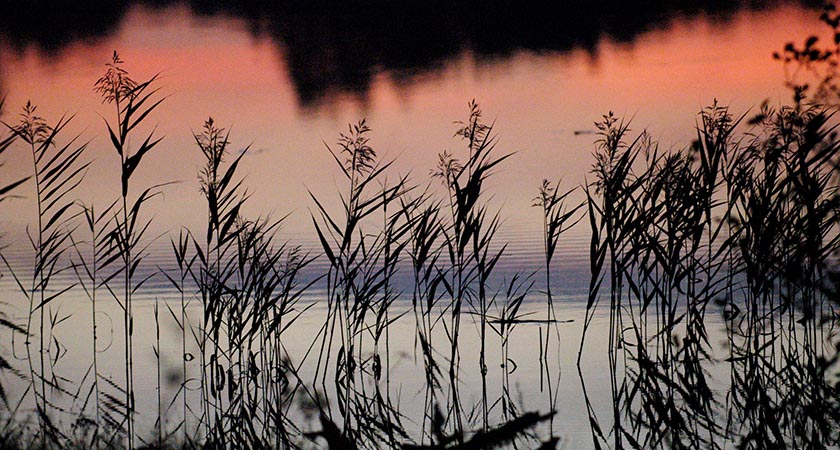 Still waters in Co. Cavan, part of Ireland's Ancient East (Picture Sinead McCarthy / Tourism Ireland)
Still waters in Co. Cavan, part of Ireland's Ancient East (Picture Sinead McCarthy / Tourism Ireland)L is for Loughcrew Cairns
Located near Oldcastle in Co. Meath this complex of passage graves might not be as well-known as Newgrange but are in fact much older. They were originally built about 4,000 bc as burial chambers.
M is for McNean House and Restaurant, Blacklion, Co. Cavan
This award-winning restaurant is the brainchild of Neven Maguire, internationally renowned chef and television and radio culinary pundit. Expect dishes that are imaginative, fresh and delicious, not least the desserts; Maguire makes some of the best puddings and pastries this side of Vienna.
 Royal County Down golf course (Picture: Chris Hill/Tourism Ireland)
Royal County Down golf course (Picture: Chris Hill/Tourism Ireland)N is for Newcastle’s Royal County Down Golf Club
In a country whose golf courses are generally accepted to be amongst the finest in the world, Newcastle’s Royal County Down probably tops the list because of its spectacular surrounding - the Irish Sea on one side and the Mountains of Mourne on the other.
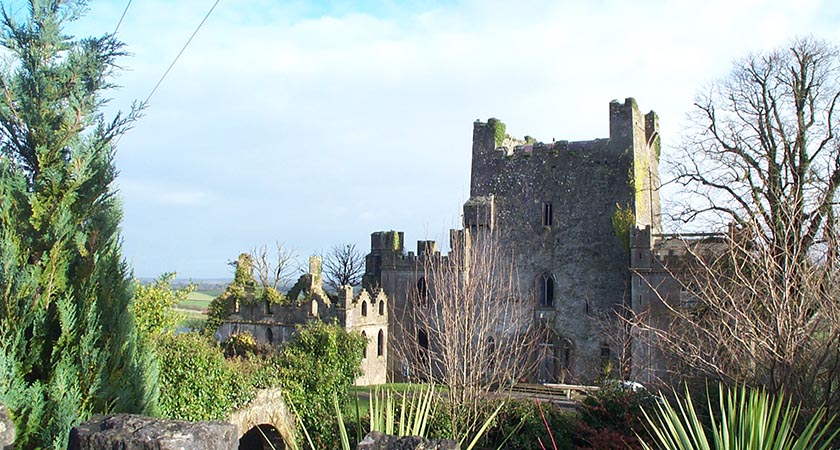 Leap Castle in Co. Offaly (Picture: Mal Rogers)
Leap Castle in Co. Offaly (Picture: Mal Rogers)O is for Offbeat Ireland in Offaly
They don’t come much more offbeat than Leap Castle, reputedly the most haunted castle in Ireland. The very model of impregnability, the castle has guarded the pass from Slieve Bloom into Munster since the 14th century. The name comes from a predictably tragic incident involving love, betrayal, murder, elopement — and of course leaping. Par for the course back then.
Leap Castle is said to be home to a particularly foul-smelling type of ghost, or elemental, once witnessed by WB Yeats on one of his sojourns into the occult here.
Like all castles in Ireland, changes in ownership have been regular, frequent and rarely done with the aid of an estate agent. But throughout all the shifting alliances, skullduggery continued, and restless spirits walked abroad.
The Bloody Chapel in the castle is steeped in eponymous gore and chilling tales. The name stuck after a younger O'Carroll murdered his brother, a priest, here. The fact that the priest was celebrating Mass with the rest of his folks made this a family day to remember.
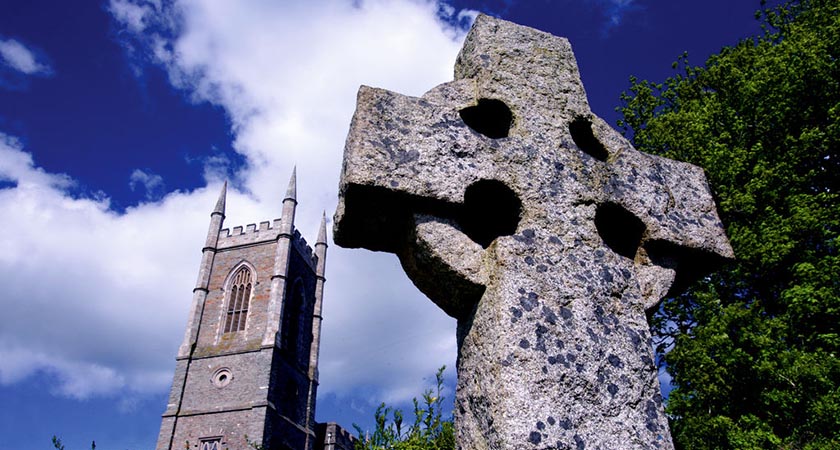 Down Cathedral, the probable last resting place of St Patrick (Picture: Brian Morrison / Tourism Ireland)
Down Cathedral, the probable last resting place of St Patrick (Picture: Brian Morrison / Tourism Ireland)P is for St Patrick’s Grave
In the leafy graveyard of Down Cathedral in Downpatrick, looking out towards the Mountains of Mourne, lies the grave of St. Patrick. A large simple granite slab with his name is all that marks out his last resting place.
Sadly, it is probable that his bones don’t lie there at all. Rather incongruously the site of the Patron Saint of Ireland's grave was picked out and erected at the beginning of the 20th century by the Belfast Naturalists' Field Club. Nonetheless, ample evidence exists that Patrick is buried somewhere in the grounds, most likely under the main portal of the cathedral.
Down Cathedral, or the Cathedral of the Holy Trinity as it likes to be called on formal occasions, has experienced a suitably tumultuous history — a place which was destroyed by earthquake, pillaged by the Danes, burnt by the Scots, destroyed again by the English; it then lay in ruins for the best part of 200 years. Today it 's hard to imagine a more tranquil place, with views across the Quoile to the ancient Cistercian Abbey of Inch.
Nearby is the Down County Museum which includes the Saint Patrick Heritage Centre, a very low key exhibition, and none the worse for that.
Q is for Queen Medb’s grave
Ireland’s most famous royalty, Medb (or Medbh or Maeve), Queen of Connacht in the Ulster Cycle of Irish mythology, is according to legend buried at Carrowmore, Co. Sligo.
The area is home to one of Ireland's great complexes of chambered cairns — a great chain of ancient sites stretching eastward with 45 standing stones, arranged under the stern gaze of the mother of all megalithic standing stones, Medb's Cairn, on top of Knocknarea. Medb was killed when a piece of cheese hit her on the head during one of her military campaigns — if only they’d packed the camembert.
According to legend, her royal personage is buried upright so that she can spot any enemies from Ulster approaching
More reliable testament of goings-on during Neolithic times comes from the archaeological record. It seems that humans have lived in this neck of the woods for over 6,000 years, and built the earliest tombs yet identified in western Europe.
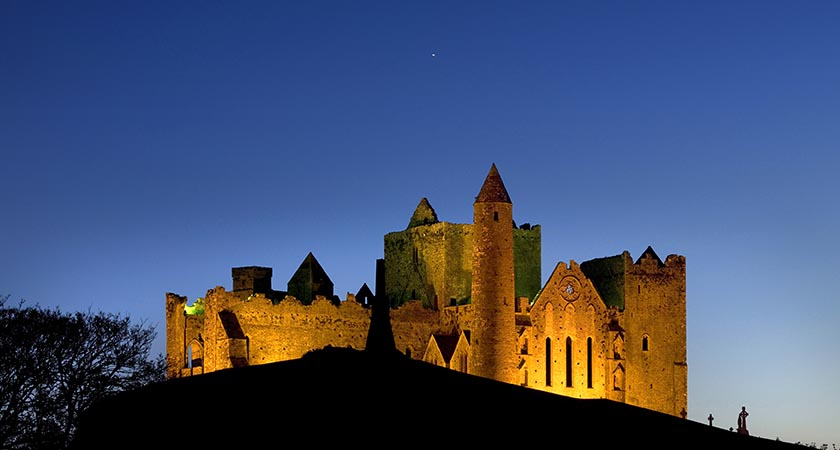 The Rock of Cashel, Tipperary (Chris Hill / Tourism Ireland)
The Rock of Cashel, Tipperary (Chris Hill / Tourism Ireland)R is for the Rock of Cashel
Tipperary's most dramatic feature, the Rock of Cashel, is topped by towers and turrets of splendid medieval architecture. The Rock and accompanying fortifications would adorn any list of the top ten castles in the world. Rising out of the plains of Kildare, this impregnable stronghold has kept vigil over the midlands of Ireland for over a thousand years.
 Skellig Michael (Picture: Tourism Ireland)
Skellig Michael (Picture: Tourism Ireland)S is for Skellig Michael
Skellig Michael, or Sceilig Mhór, in one of Ireland’s three UNESCO Heritage Sites. The small peaked island has everything: beauty, history, cultural significance — and now a starring role in Star Wars. “May the craic be with you,” say the T-shirts, a reference to Star Wars Episode VIII having been extensively filmed here.
Some eight, tricky miles out in the Atlantic, the Skelligs - when not being used as a film location - are today the des res of thousands of sea birds. But some 1,500 years ago this was home to a community of Anchorite monks who founded one of the first Christian settlements in Ireland. A thousand-year-old stone staircase still leads up to little stone beehive living quarters of these zealous guys.
T is for Titanic Belfast
A bitterly fought court case between two English spas - Huddersfield's Titanic Spa and the Titanic Hotel Liverpool (owned by Belfast property developer Patrick Doherty) over the use of the word ‘Titanic’ took place in 2016.
The legal action shows how far the name Titanic has penetrated into popular culture. A maritime shipping disaster, and for long an event that cast a shadow over Belfast and its ship-building reputation, has been totally rehabilitated.
For the true story, head for Titanic Belfast, the museum dedicated to that famous double act Harland and Wolff, and their fateful creation.
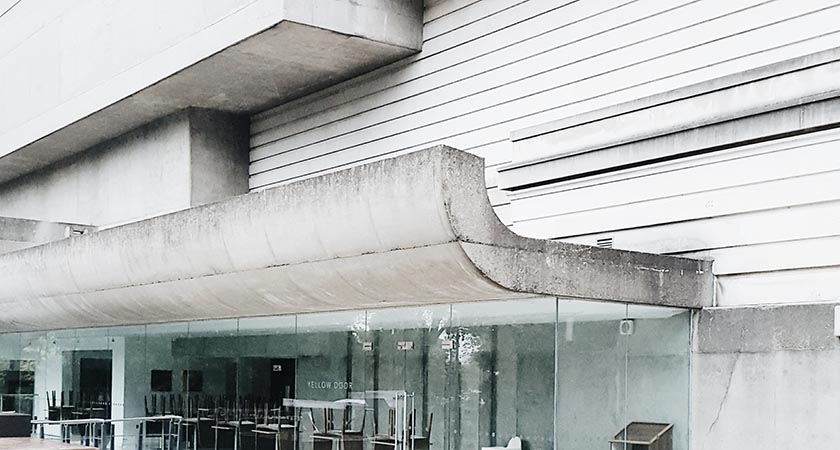 The Ulster Museum (Picture: Tourism Ireland)
The Ulster Museum (Picture: Tourism Ireland)U is for the Ulster Museum
Architects love it, locals used to hate it - the raw-boned building monster of a building that is the Ulster Museum. But Belfast’s population is now used to it, perhaps even proud of the fact that that this is one of Europe’s finest examples of Brutalist design.
Architectural historian David Evans speaks about the “almost barbaric power of its great cubic projections and cantilevers, brooding over the conifers of the Botanic Gardens like a mastadon”.
Inside is no less impressive, with one of the world’s largest archives on Irish history and Ulster industry.
V is for St Valentine
St. Valentine's Day is another of those calendar markers like December 25 which involves a saint, a bit of food, a scoff of chocolates, some vague traditions and the great organ grinder of commerce. And yet the remains of St Valentine lie in a modest casket in an unassuming Dublin church, with little in the way of commercialism surrounding it.
Whitefriar Street Church on Aungier Street has no big red neon heart announcing the site of St Valentine’s final resting place, no interactive digital display welcoming you to some heritage centre. Well done!
The casket has apparently not been opened since the saint’s remains were locked inside - documents of authentication and a papal seal verify the contents. It would be fair to point out that rival claims on the location of Valenine’s remains do exist - bones of contention as it were - but most historians accept that they were passed on as a gift from Pope Gregory XVI to the respected Dublin Carmelite Father John Spratt for services rendered to the Pope.
 Downpatrick Head on the Wild Atlantic Way (Picture: Kelvin Gillmor / Tourism Ireland)
Downpatrick Head on the Wild Atlantic Way (Picture: Kelvin Gillmor / Tourism Ireland)W is for the Wild Atlantic Way
The Wild Atlantic Way, a 1,500-mile trail stretching from the Inishowen Peninsula, in Co. Donegal, to Kinsale, Co. Cork, is Ireland's first long-distance touring route, stretching along the westerly and north westerly seaboard. The route constitutes a cohesive itinerary for visitors, sign-posted with recommendations of ‘discovery points’ - with enhanced viewing points and interpretive boards.
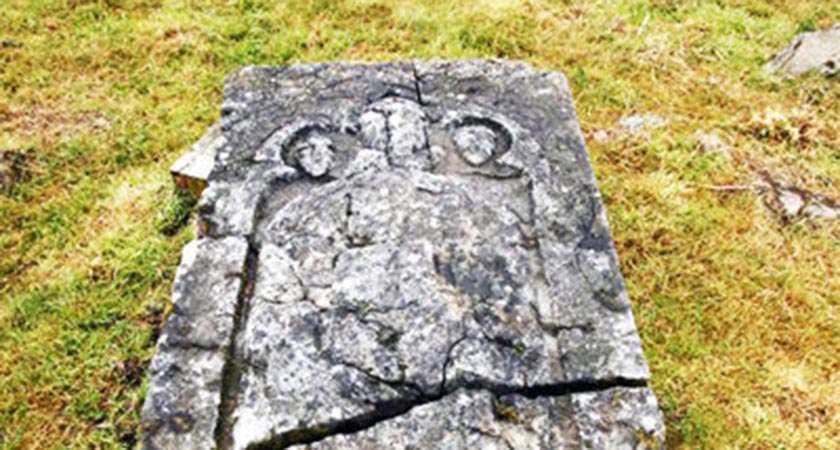 The possible grave of St Nicholas in Co. Kilkenny (Picture: public domain)
The possible grave of St Nicholas in Co. Kilkenny (Picture: public domain)X is for Xmas
Near Jerpoint Abbey lies the grave of Santa Claus. No, really. A persistent local legend has it that the earthly remains of St. Nicholas can be found amongst the ruins of a 12th century church, part of an abandoned medieval village.
In the churchyard of St. Nicholas, a strange grave shows the effigy of a cleric, probably a bishop, overlooked by two stone heads. Locally, the effigy is reputed to be that of St. Nicholas, Bishop of Myra (a.k.a. Santa Claus), with the heads depicting the two crusaders who brought the remains of the bishop back to Ireland.
The bones of the story are that a band of Irish-Norman knights journeyed to the Holy Land during the Crusades. After much derring-do, they seized the remains of the much revered St. Nicholas and brought them back home to Kilkenny.
Most historical sources, to be fair, claim the bones of St. Nicholas in fact went to Bari, in Italy. However, anything to do with St. Nicholas is shrouded in mystery - his very existence is not even confirmed with great conviction in any historic document.
Y is for Yurt
Awaken in your yurt to the sound of waves gently lapping at rocks below you on Ireland’s southerly most island. Yep you’re on Cape Clear, a 45 minute ferry trip from Baltimore. Your yurt is a type of tent originating in Mongolia and made from natural fibres and timber. This framework is covered in thick felt and protective materials to make a warm snug, calm environment. Light your log stove, shut your wooden door on the elements and bring out your fiddle or favourite book.
Z is for Zoo
Z, so often the bugbear of any list maker, could have been particularly difficult for Irish destinations. After all, there’s no Z in the Irish language, and consequently only one place name on the whole island carries the letter - Poyntzpass in Co. Down. But no need for panic here. Dublin Zoo in the Phoenix Park is the second most-visited attraction in Ireland, and it’s not difficult to see why. The zoo is preeminent in conservation, study and education.
Fame has touched Dublin Zoo as well — a former inhabitant became one of the best known faces in the world in the 20th century. The first MGM lion (who roars at the beginning of all MGM films) was called Slats, born in Dublin Zoo in 1919, and originally named Cairbre.

